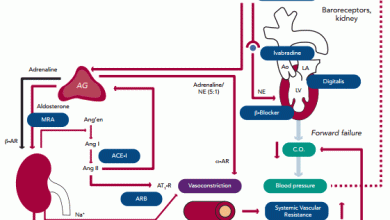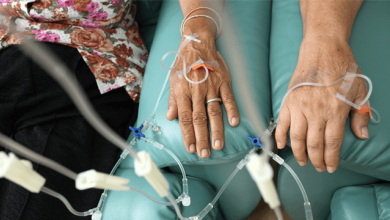Search results
Author(s):
Nazzareno Galiè
Added:
3 years ago
The field of pulmonary arterial hypertension (PAH) has recently been characterised by rapid improvements in therapeutic options and corresponding improvements in patient outcomes. In 1991, estimates from the US Department of Health and Human Services National Institutes of Health (NIH) Registry painted a grim portrait of survival in patients with pulmonary hypertension - then called primary…
View more
Author(s):
Arturo Evangelista
Added:
3 years ago
The International Registry of Acute Aortic Dissection (IRAD) was established in 1996, enrolling patients at large referral centres worldwide. It represents a unique opportunity to assess the current presentation, management and outcome of acute aortic syndrome (AAS). The IRAD is an observational registry with more than 1,500 patients enrolled at 21 tertiary centres in six countries. Collected…
View more
Chronic Thromboembolic and Pulmonary Arterial Hypertension Share Acute Vasoreactivity Properties
Author(s):
Silvia Ulrich
Added:
3 years ago
Article
Author(s):
Christoph Maack
,
Michael Böhm
Added:
3 years ago
Chronic heart failure is the leading cause of hospitalisation in Germany1 and other European countries. It is the result of various cardiovascular diseases, such as myocardial infarction, arterial hypertension and valvular heart diseases. About 50 % of patients with heart failure have normal systolic, but impaired diastolic function, a condition termed heart failure with preserved ejection…
View more
Author(s):
Carsten Schwenke
,
Monica Boos
,
Rainer Hentrich
,
et al
Added:
3 years ago
Since its introduction in 1993,1 contrast-enhanced magnetic resonance angiography (ce-MRA) has been considered the technique of choice for angiographic examination of most regions of the body. This is because of several technical and clinical advantages in comparison with non-contrast-enhanced MRA (nce-MRA) imaging. In this article, we focus on patients with suspected peripheral arterial…
View more
Author(s):
Hani Essa
,
Gregory YH Lip
Added:
2 years ago
Author(s):
Howard C Herrmann
Added:
5 years ago
Prof Howard C. Hermann (University of Pennsylvania, US) discusses prosthesis-patient mismatch - Incidence, predictors and outcome of prosthesis-patient mismatch after transcatheter aortic valve replacement.
Filmed by Radcliffe Cardiology on site TCT 2018.
View more
Author(s):
Carmine Dario Vizza
,
Roberto Badagliacca
,
Roberto Poscia
,
et al
Added:
3 years ago
Abstract
Pulmonary arterial hypertension (PAH) is a serious and life-threatening condition for which the prognosis remains poor. Treatment options include endothelial receptor antagonists, phosphodiesterase (PDE5) inhibitors and prostanoids. Despite all demonstrating good short-term efficacy, none of the currently available drug therapies are curative. Treatment with prostanoids is complex and…
View more
Author(s):
Diego Penela
,
Maríbel Diaz-Ricart
,
Magda Heras
Added:
3 years ago
The usual underlying mechanism of acute coronary syndromes (ACSs) is a thrombotic event caused by the rupture or erosion of an atherosclerotic plaque. In this scenario, platelets and thrombin are key players. Thus, understanding the physiopathology of platelet activation is of paramount importance in the treatment of acute coronary ischaemia. There is ample evidence showing that adequate…
View more
Transvenous Phrenic Nerve Stimulation - A Novel Therapy for Central Sleep Apnoea in Heart Failure
Author(s):
Sitaramesh Emani
,
William T Abraham
Added:
3 years ago
Article












 « First
« First